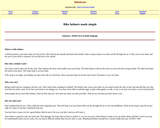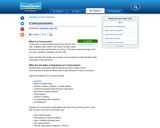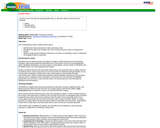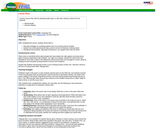
This resource provides tips for bicycle safety.
- Subject:
- Health
- Healthful Living
- Material Type:
- Reading
- Provider:
- ThinkFirst
- Date Added:
- 01/09/2018

This resource provides tips for bicycle safety.

This resource provides questions and answers about helmet facts.

Students learn what a concussion is and what causes it, as well as, what to do after a concussion and possible ways to prevent concussions.

To help ensure the health and safety of young athletes, CDC developed the Heads Up: Concussion in Youth Sports initiative to offer information about concussions to coaches, parents, and athletes involved in youth sports. The Heads Up initiative provides important information on preventing, recognizing, and responding to a concussion.

This article provides information to help students understand the dangers of air pollution to their health.

This article provides information to help students understand how to protect themselves from air pollutants.

This infographic has information on bicycle safety.

Students will identify factors that prompt teens to take unnecessary risks, recognize the high costs of health care in this country and discuss ways of reducing that burden, and apply the reading skill of drawing conclusions to an article on risk taking in order to understand its message for teens in particular.

As an A-student and star soccer player, Sarah is accustomed to hard work. However, after she sustained a concussion during a varsity soccer game, her freshman year in high school she found herself taking on a new challenge. This resource provides students with information on how serious a head injury can be and the steps to take if someone receives a head injury.

This is a supplemental poem that should be used in conjunction with the Survival lesson plan. The poem discusses various ways to survive in nature.

Students will describe strategies for avoiding problems that occur during extreme weather, explain how careful planning can help a person survive in situations involving nature, and recognize that accidents, especially among teens, can happen when risks are taken.

This is a supplemental article that should be used in conjunction with the Rescue Costs lesson plan. The article discusses how risk-taking and injuries affects the economy and the costs of care.

This video resource was developed by Neuroscience students of Wake Forest University. These videos are designed for middle and high school. It describes Traumatic Brain Injury basic information as well as categorization of injuries.

This resource provides information on what happens when you crash your bicycle and hit your head on the ground.